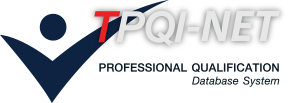หน่วยสมรรถนะ
Inspect aircraft instrument systems and components.
สาขาวิชาชีพการบิน
รายละเอียดหน่วยสมรรถนะ
| 1. รหัสหน่วยสมรรถนะ | AVT-FTN-4-074ZA |
| 2. ชื่อหน่วยสมรรถนะ | Inspect aircraft instrument systems and components. |
| 3. ทบทวนครั้งที่ | - / - |
| 4. สร้างใหม่ |
|
ปรับปรุง |
|
| 5. สำหรับชื่ออาชีพและรหัสอาชีพ (Occupational Classification) | |
|
|
|
| 6. คำอธิบายหน่วยสมรรถนะ (Description of Unit of Competency) | |
| This unit of competency requires application of hand skills and the use of system/component knowledge and applicable maintenance publications to inspect aircraft instrument systems and components of fixed and rotary wing aircraft during scheduled or unscheduled maintenance. Work may be completed individually or as part of a team. | |
| 7. สำหรับระดับคุณวุฒิ |
| 1 | 2 | 3 | 4 | 5 | 6 | 7 | 8 |
|---|---|---|---|---|---|---|---|
| 8. กลุ่มอาชีพ (Sector) | |
| 7232 Aircraft Mechanics | |
| 9. ชื่ออาชีพและรหัสอาชีพอื่นที่หน่วยสมรรถนะนี้สามารถใช้ได้ (ถ้ามี) | |
| N/A | |
| 10. ข้อกำหนดหรือกฎระเบียบที่เกี่ยวข้อง (Licensing or Regulation Related) (ถ้ามี) | |
| ICAO Doc 7192 / EASA Part 66 | |
| 11. สมรรถนะย่อยและเกณฑ์การปฏิบัติงาน (Elements and Performance Criteria) |
| หน่วยสมรรถนะย่อย (EOC) | เกณฑ์ในการปฏิบัติงาน (Performance Criteria) | รหัส PC (ตามเล่มมาตรฐาน) |
รหัส PC (จากระบบ) |
|---|---|---|---|
| 103403.01 Inspect instrument systems and components. | 103403.01.01 Able to attach isolation tags for safe instrument systemsand components inspection | 103403.01.01 | 71264 |
| 103403.01 Inspect instrument systems and components. | 103403.01.02 Able to checkisolation tags and aircraft configured for safe system inspection andoperation in accordance with the applicable maintenance manual. | 103403.01.02 | 71265 |
| 103403.02 Identify and record defects. | 103403.02.01 Able to identify and record Defects correctly inaccordance with standard enterprise procedures | 103403.02.01 | 71266 |
| 103403.02 Identify and record defects. | 103403.02.02 Able to checkInstrument system components visually or physically for external signs ofdefects in accordance with applicable maintenance manual while observing allrelevant work health and safety (WHS) requirements. | 103403.02.02 | 71267 |
| 12. ความรู้และทักษะก่อนหน้าที่จำเป็น (Pre-requisite Skill & Knowledge) | |
|
|
|
| 13. ทักษะและความรู้ที่ต้องการ (Required Skills and Knowledge) | |
|
(ก) ความต้องการด้านทักษะ
(ข) ความต้องการด้านความรู้
|
|
| 14. หลักฐานที่ต้องการ (Evidence Guide) | |
|
|
|
| 15. ขอบเขต (Range Statement) | |
|
• Industry standard procedures specified by manufacturers, regulatory authorities or the enterprise |
|
| 16. หน่วยสมรรถนะร่วม (ถ้ามี) | |
| N/A | |
| 17. อุตสาหกรรมร่วม/กลุ่มอาชีพร่วม (ถ้ามี) | |
| N/A | |
| 18. รายละเอียดกระบวนการและวิธีการประเมิน (Assessment Description and Procedure) | |
|
• This shall be established via the records in the Log of Industrial Experience and Achievement or, where appropriate, an equivalent Industry Evidence Guide. |
|
